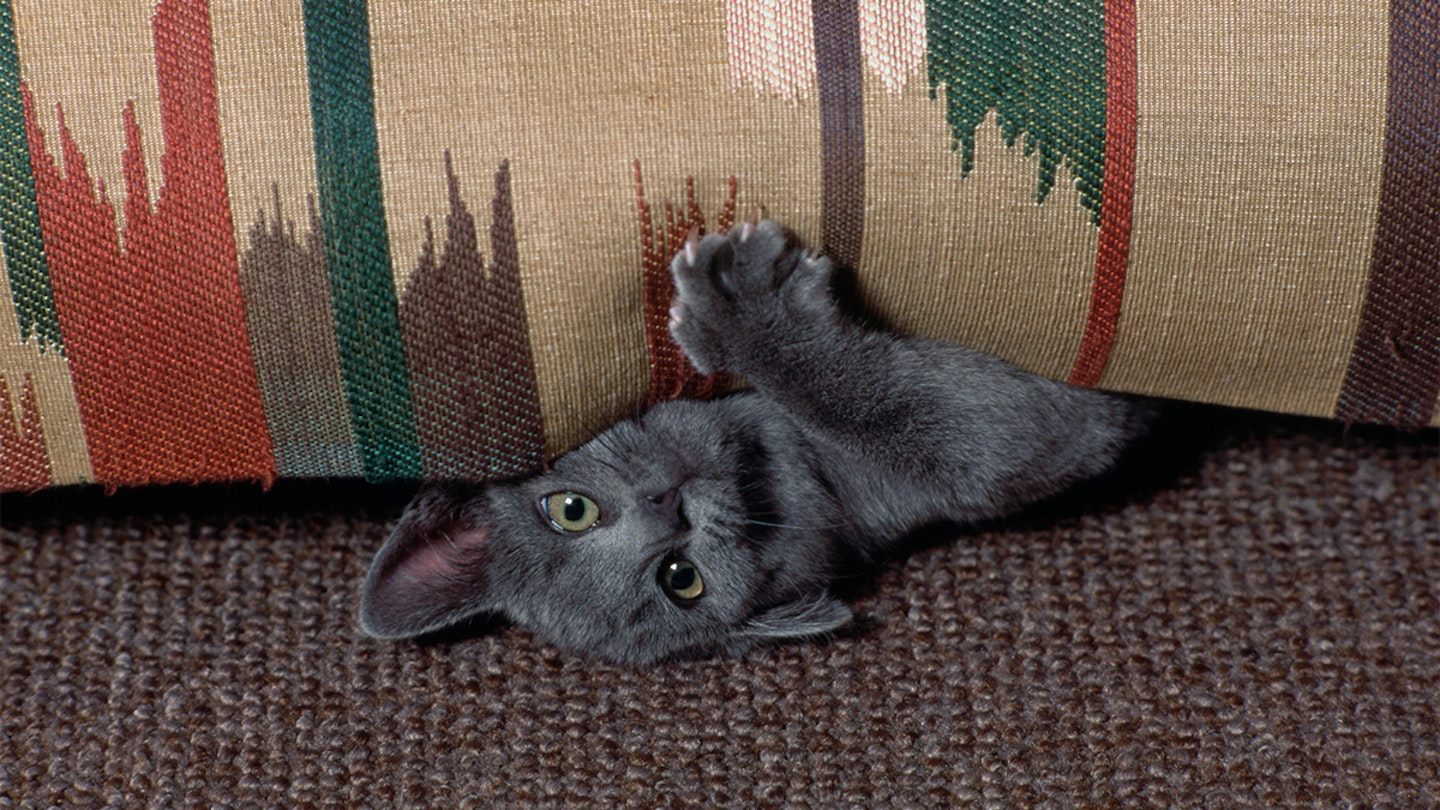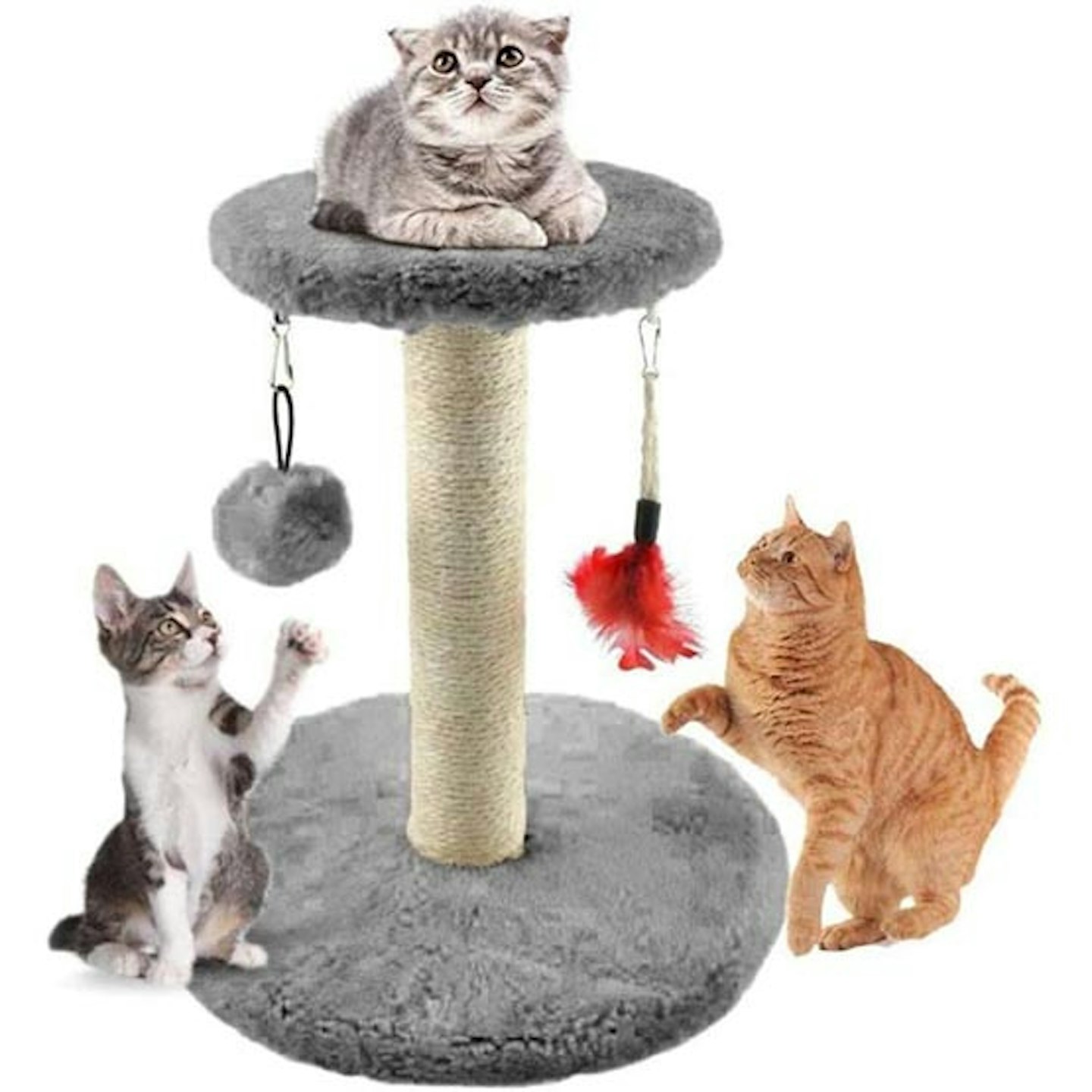Finding ways to stop your cat scratching the carpet can be tricky, but just trust us when we say they’re really not trying to get on your bad side.
Infact, scratching is a completely normal behaviour for cats as it’s how they care for their claws, initiate attention or attract play. Cats like materials and surfaces that they can dig their claws into, meaning that sometimes your carpets or furniture, such as sofas or table legs.
Unfortunately, it's not as easy as if they have a toilet accident, as you can just get the carpet cleaner out. Fortunately there are several ways you can discourage your cat from scratching furniture or a specific spot. Here is a guide on how to stop your cat from scratching the carpet, furniture, doors or wallpaper.
Why do cats scratch your furniture?
Scratching is an important part of a cat’s wellbeing and health; it is their instinct to use their claws on surfaces. Cats will scratch by digging their front claws into the surface.
When cats scratch it loosens and removes the outer parts of their claws to reveal new sharp ones (known as ‘stropping’). As well as needing a good vacuum to pick up all that pet fur, it is common to find shed nails around the area where your cat likes to scratch. Claw sharpening is their way of grooming themselves.
Scratching is also an exercise for cats as it strengthens the muscles of the forelimbs and spine to keep the cat in shape to hunt.
Cats can scratch either lying down or standing up depending on which pattern they like to dig their claws in.
Your cat may also scratch the carpet or other items as a way to get your attention. This is especially more likely if you constantly find yourself shooing away your cat every time they’re scratching something, because they then start to associate this as a way of getting your attention. This is a similar reason why it can be hard to stop your cat from spraying on furniture too.
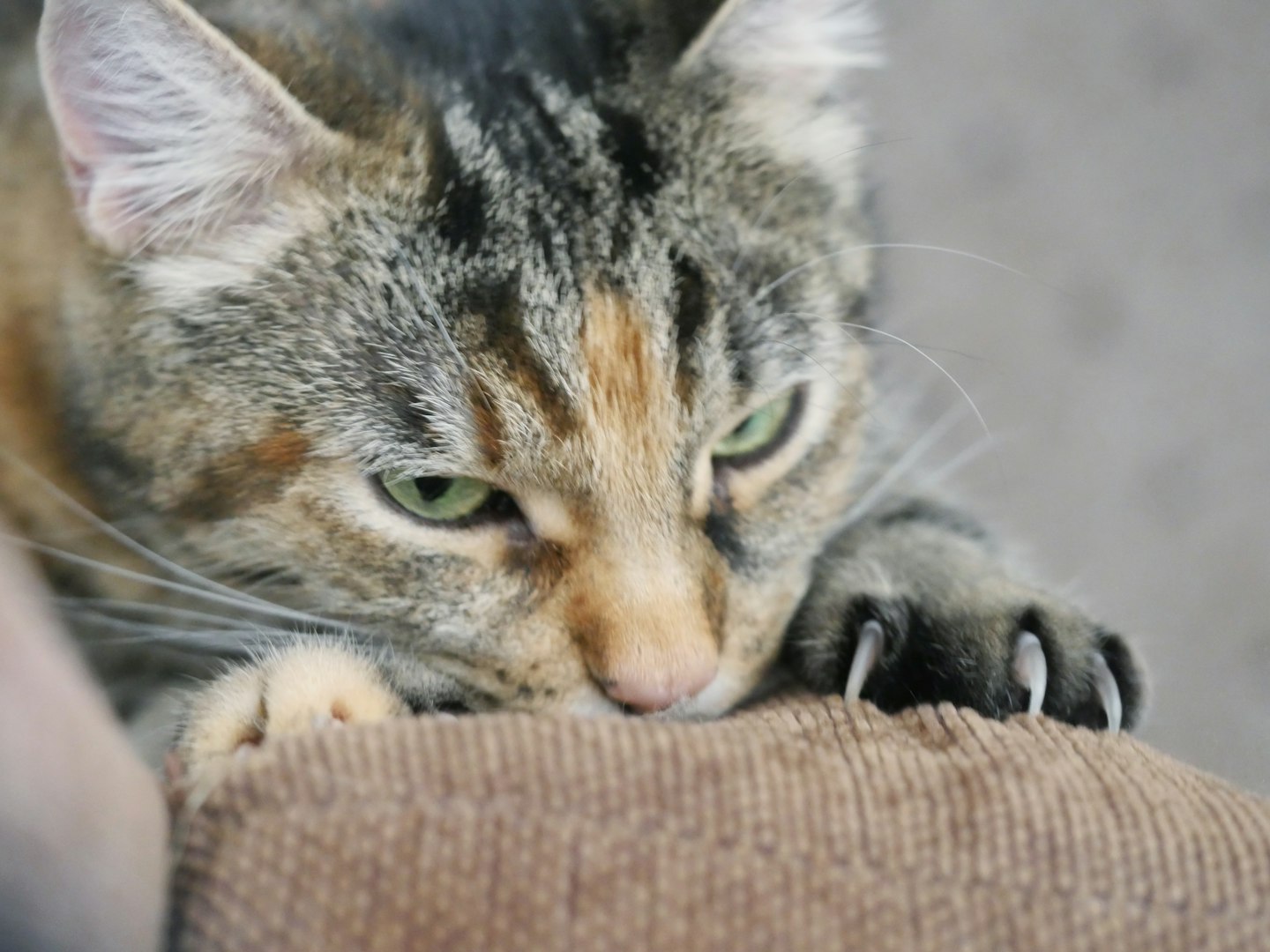
How to stop a cat from scratching the furniture or carpet
To discourage your cat from scratching and damaging your carpet, you need to redirect the spot that your cat likes to revisit and scratch.
Cat furniture like scratching posts are specifically designed to replicate carpet or furniture, and give your pet somewhere they can scratch without causing damage to your belongings.
Keep their claws trimmed
We know how stressful cutting your cats claws can be, but it's essential to keep them nice and short to avoid any nasty scratches to you or your furniture.
Always stick to the white bit of the claw to avoid catching their nerve endings. Make sure your cat is relaxed and sleepy before cutting their claws.
If you don't feel confident doing this, you can always book in with your vet who can cut them for you.
Invest in cat scratching posts and boards
If your cat likes to scratch the carpet, then the best solution is to choose scratching surfaces that are more desirable to your cat than your furnishings.
You can buy scratching posts in a range of fabrics and designs. The best thing to do is choose one that best replicates the furniture or area they like to scratch.
Make sure to place the new scratching surface in the place where your cat spends a lot of time. Cats are intelligent and curious creatures; they will soon investigate this new addition to their surroundings.
If you want to speed up the process you can encourage your cat to go to the new scratching board by playing a game with them. You can simply use a rod and string that dangles a fun cat toy around the base of the scratching post, and this will inspire them to dig their claws in.
Choose cat furniture based on their scratching patterns
Cats have their own individual scratching patterns and preferences.
If your cat scratches the carpet, then it will be more inclined to use its claws horizontally. Therefore, a horizontal scratching pad would be most effective.
They are also wedge-shaped inclines and others that are completely flat. Here are some options that you can buy.
Get a piece of multi-level cat furniture
Sometimes cats scratch purely out of boredom. So, if you notice that your cat scratches in order to get your attention, investing in a multi-level cat structure could be the solution. These allow your cat to climb, scratch, perch and sleep on raised beds. The idea is that this cat furniture will interest your cat more than your sofa or carpet.
You can add multiple scratching posts and pads and cover them with different materials and different textures. Many scratching posts are covered with carpet, but you could also add some other types of material, such as sisal, corrugated cardboard, or even plain wood.
Be sure that the scratching posts are sturdy, so they remain fixed in place and don’t fall and hit the cat or other furniture in your home.
Infuse the area with a deterring scent
Since cats have sensitive noses, strong smells can put them off certain areas of your home, or certain pieces of furniture.
Unfortunately, you can't just use your pet carpet cleaner to deter your cat – you'll need a specially formulated repellant. You can purchase sprays to stop cats from scratching furniture, but it's easy to make your own homemade cat scratching spray using vinegar, essential citrus oils, or even garlic and peppermint.
Mix some vinegar with liquid hand soap and water in equal parts. Spray, wipe or pour over areas of concern, indoors or outdoors.
Encourage use of scratching posts and calm behaviour with 'friendly pheromones' such as catnip which you can rub on a scratch pole.
Another way to stop your cat from scratching a specific area or piece of furniture is to use a feline pheromone plug-in or a spray like Feliway.
Cat behaviourists have found that the 'friendly pheromones' in such sprays can trick cats into thinking that the place has already been marked by another cat, providing a natural message to cats via its territory pheromones. Once a cat scratches a surface, its pheromone scent will leave a mark and will encourage them to return to a spot.
Items to stop your cat scratching the carpet
This smaller tower is great if you don't want something that will take over your room as it comes in a nice neutral colour. The dangling ball and feathers will entice your cat to come play and get all their scratching out of their system.

This scratching block has multiple scratching angles to match your cat's preference. It's a great choice if your cat seems to scratch at everything and doesn't show a particular preference for horizontal or vertical.

www.petsathome.com
This flat scratch pad is perfect for cats that attack carpets. Pets At Home also recommend adding a sachet of catnip to provide your kitty with extra added fun.
This is a great cat tower option with multiple levels and things to interest your cat. Placing it near a window will make it a desirable perch for your cat to sit and watch the world go by. Tip: with large cat furniture items it could be worth investing in a smaller piece first to make sure that your cat will actually use a tower.
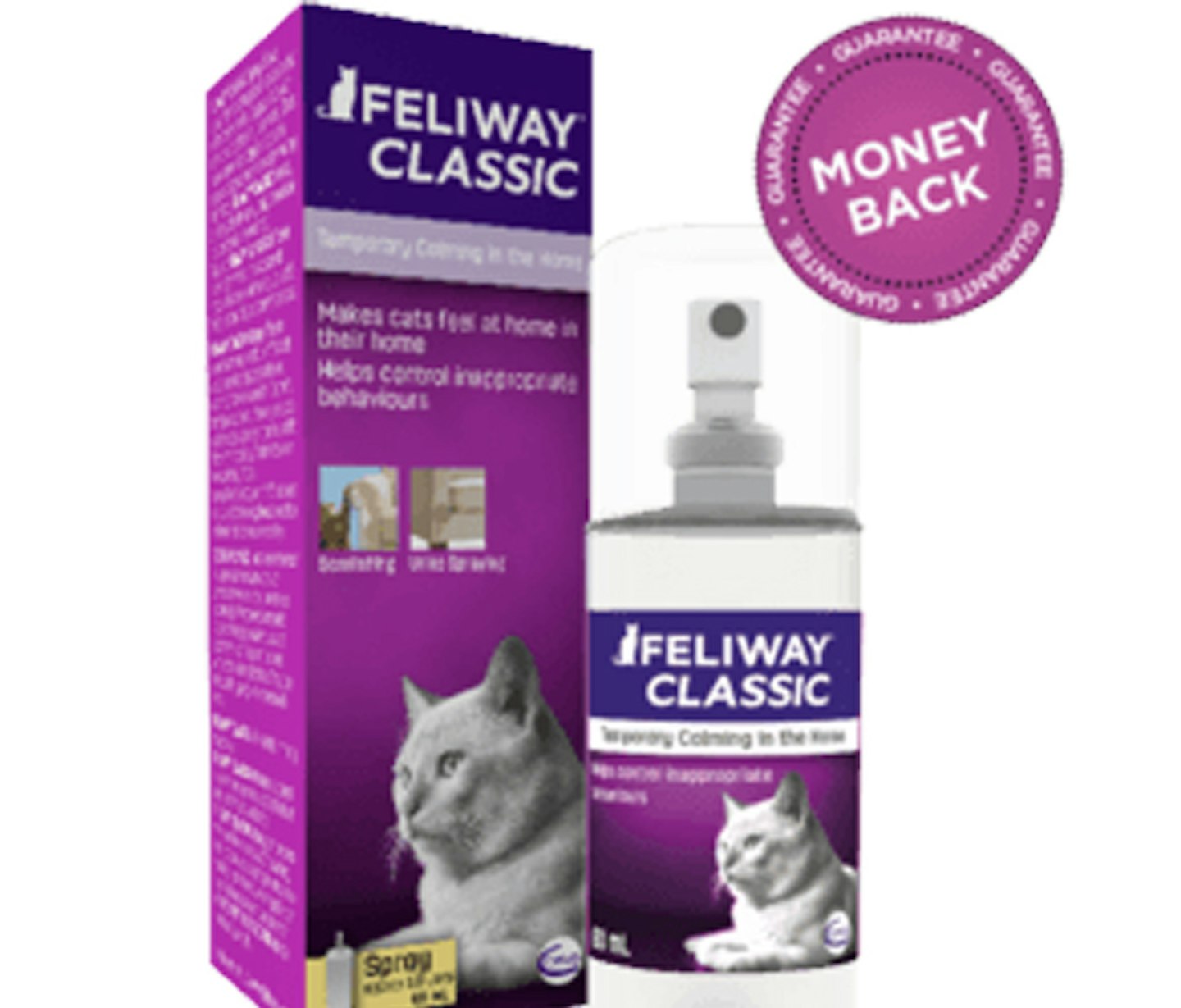
Sometimes cats can scratch more when stressed. FELIWAY works to help your cat feel safe and secure. The spray is effective for up to 5 hours and only requires a few sprays.
How to stop a cat from scratching the wallpaper or the door
If you notice that your cat is scratching the door or wallpaper then cover the scratched area in a thick plastic sheet to stop the cat from scratching there.
Place the scratchboard or post by the targeted area and when they use the post encourage them by leaving them treats from your favourite cat subscription box service.
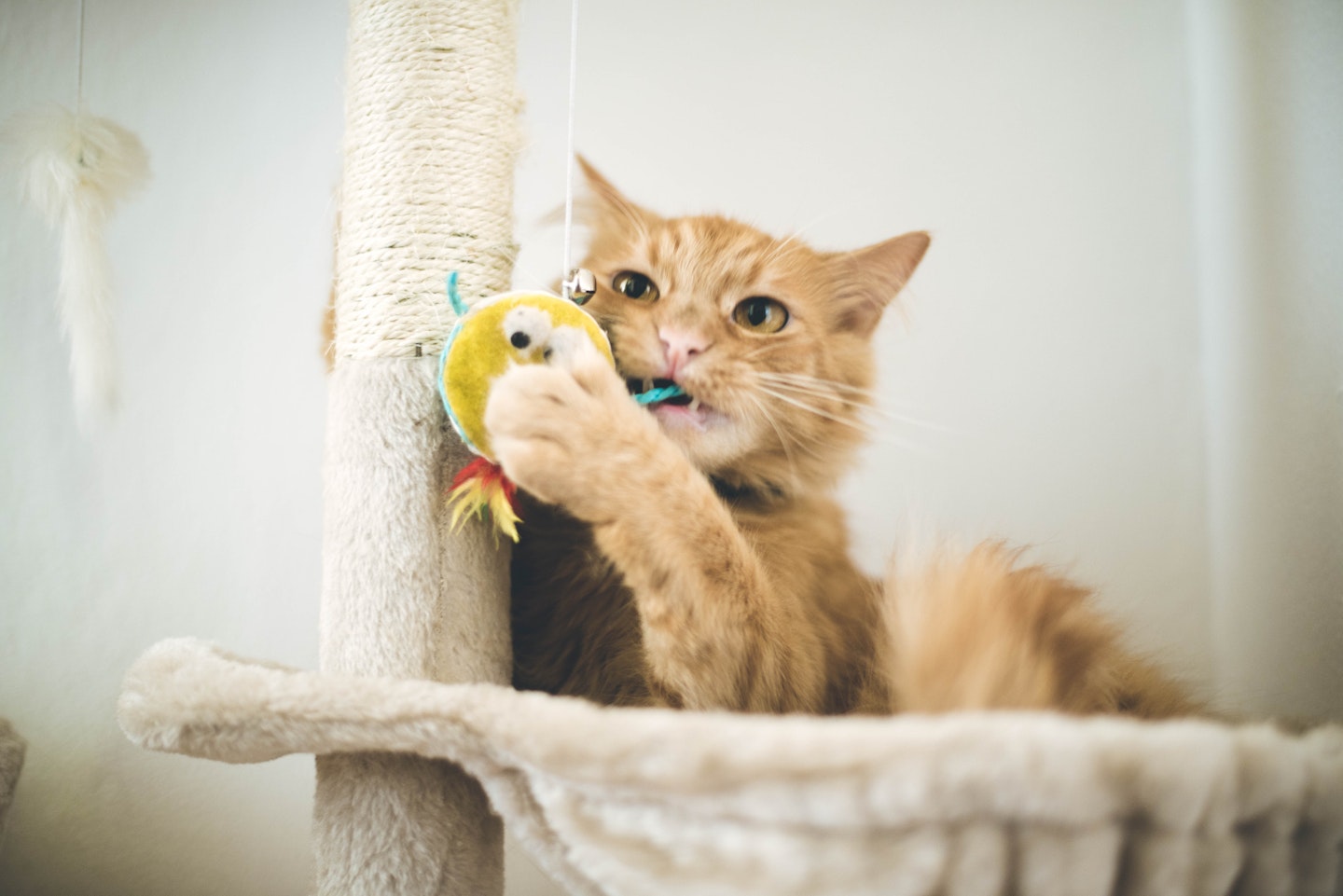
Could your cat be anxious?
A cat can scratch more often if it feels worried or threatened by environmental changes such as a new house, pet or child. If you are concerned that your cat’s scratching is anxiety-related, it is advised to contact a vet for a referral to a behaviour specialist.
